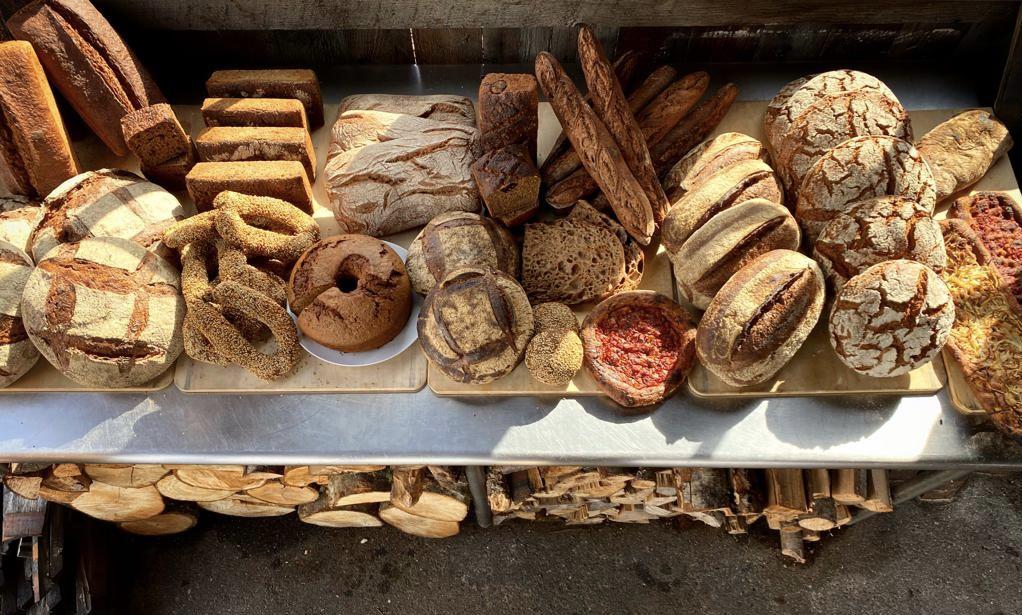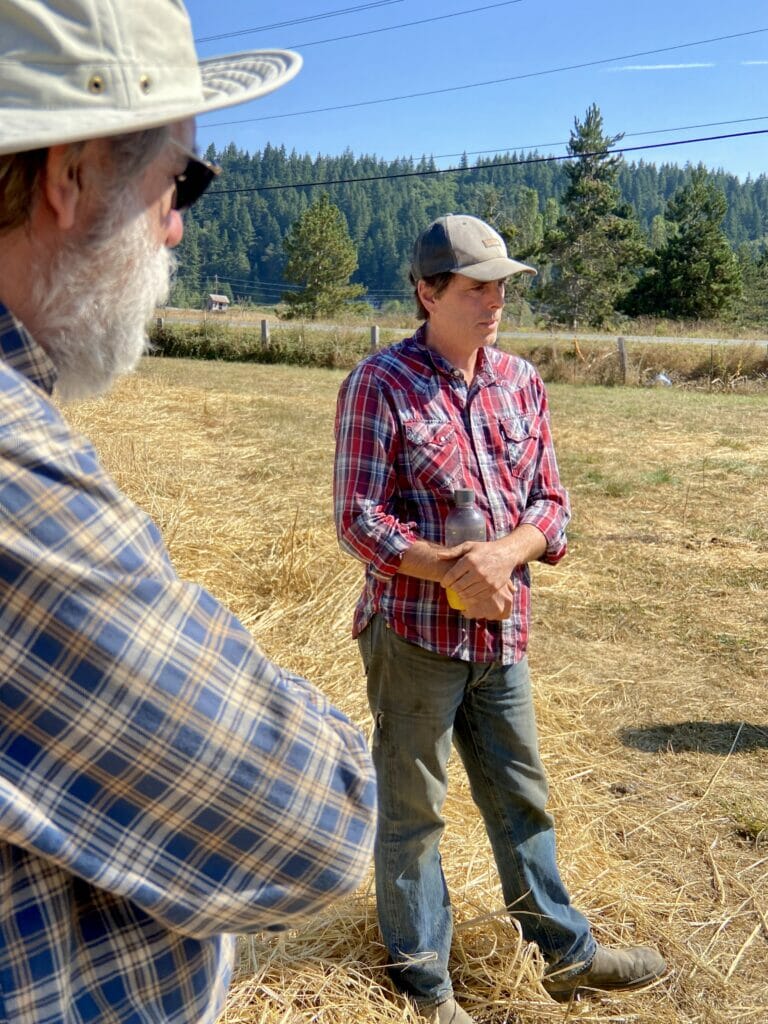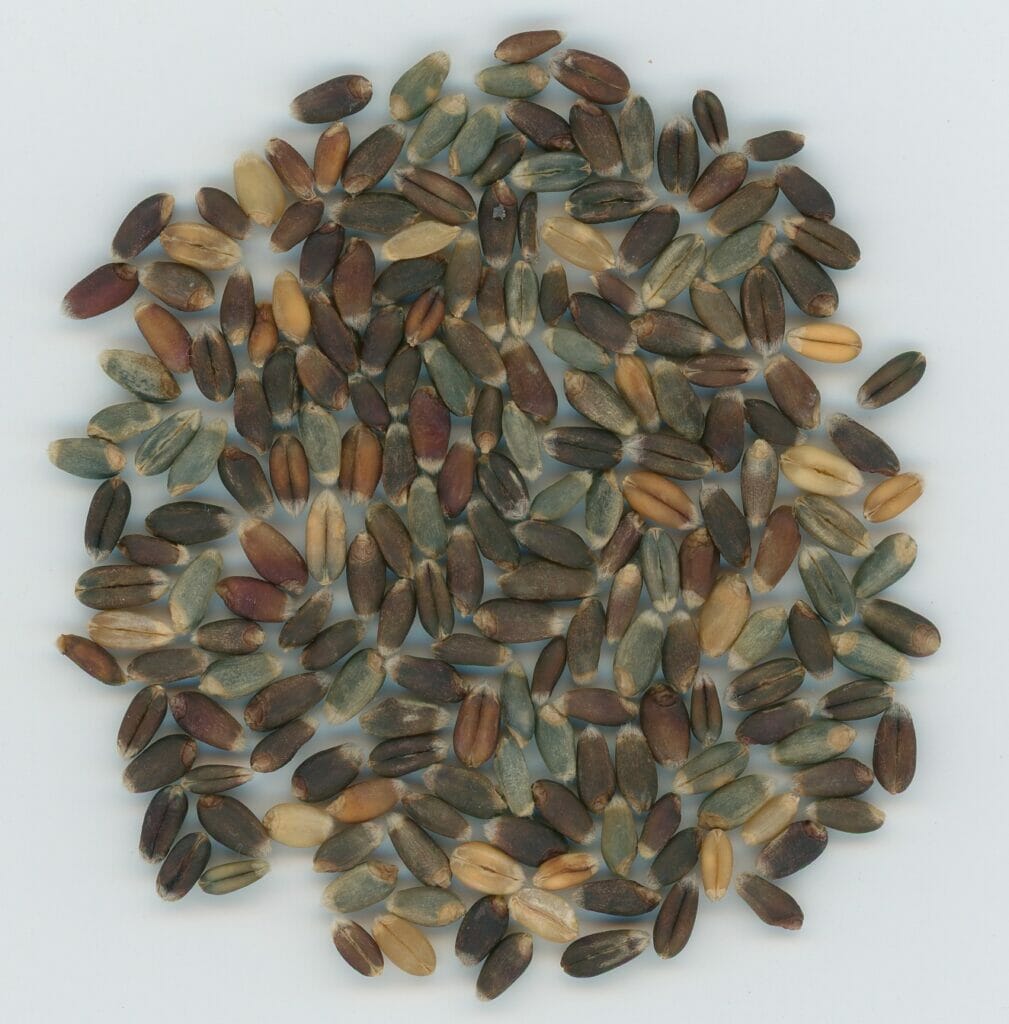A New Wave of Grain Innovation Rises in the Pacific Northwest
From field to loaf, Washington State University’s Breadlab aims to transform all aspects of the grain economy.
A New Wave of Grain Innovation Rises in the Pacific Northwest
From field to loaf, Washington State University’s Breadlab aims to transform all aspects of the grain economy.

Researchers at the Breadlab in Skagit Valley regularly trial their new wheat varieties by baking bread...lots of bread.courtesy of the Washington State University Breadlab.
Grain has almost always been a central fixture in Keith Kisler’s life. Coming from four generations of eastern Washington wheat farmers, his childhood was embellished with regular trips on the tractor, weaving through fields of wheat and helping during harvests. Days were often topped off with freshly baked bread made by his grandmother, Eileen.
“I always felt I would grow grain, wherever I was. And I wanted to do things sustainably,” he says. “The more food we can provide locally is always a good thing to help buffer the larger political and environmental movement and conditions around the world.”
Since 2004, Kisler has co-owned and operated Finnriver Farm and Grainery in Washington’s Chimacum Valley with his wife Crystie. On about 40 acres, the couple grows organic spelt, common wheat, perennial wheat, barley, rye, quinoa and buckwheat. But Kisler reaching his goal to contribute to a sustainable and strong regional food system has largely been possible due to a partnership with Washington State University’s Breadlab, which has lasted more than a decade.
Founded in 2011 by plant breeder and geneticist Stephen Jones, the facility is the only one of its kind in the country. The Breadlab works with farmers, millers, bakers and distillers to develop, test and integrate new grains into their regional food systems.

Farmers such as Kisler grow out and trial hundreds of whole grain varieties that have been bred in an effort to improve certain traits, such as taste, nutrition, color, yield and hardiness.
One variety to come out of the lab recently is called Salish Blue, a perennial grain, meaning it will grow back on its own for several seasons and farmers won’t have to till and replant it every year. This is a big deal, as most grains are annual plants. Salish Blue’s roots also aid in water filtration and help prevent erosion. Another well-known creation is the Skagit 1109, a hard red winter wheat prized for its high yield and ability to survive cold, wet winters and resist disease.
Historically, the lab’s work has focused on what grows in the Skagit Valley and surrounding regions, but the lab is slowly spreading out to target producers in the Great Plains. The aim is to make whole grains affordable and accessible to as many people as possible, according to Janine Johnson, head of special projects for the WSU Breadlab. This comes down to a number of factors, she says, but in recent years, resilience to climate change has been top of mind.
“Farmers have been seeing these extreme twists happen throughout their growing season and we’re hearing that a lot of crop failure is largely due to these events,” Johnson says. “We’re trying to keep up with it, but in doing so, we’re sort of in the business of changing minds for people to branch out and try something different.”
To develop many of its grains, the Breadlab uses a technique called population breeding. This involves planting several thousands of varieties in a field, which allows for free interbreeding and evolutionary changes to organically unfold. Researchers study and select how each one responds to different events throughout the growing season.
To combat climate change with grain crops, the lab uses an approach that utilizes as much genetic diversity as possible, or throwing “change at change,” as Johnson describes it. They do this so that when crops face extreme events, there is a higher success rate that there will be some genetic traits that can adapt. It’s kind of like having a sports team that has a wide range of strengths and skills so that they are well equipped to take on any opponent.
Last fall, this methodology was observed on Kisler’s farm when he harvested the lab’s “climate blend.” This concoction consists of several wheat varieties, mostly fifth or sixth generation, combined with breeding lines that are not yet developed into full seed varieties.

“Everyone’s usually so obsessed with the purity of seeds, like one particular variety, but this is a grain with a whole bunch of characteristics playing off each other,” says Kisler. “One or two of the varieties [in the blend] might do well, based on the season, but the next year it might be the reverse, so there’s some stability in the seed stock.”
For Kisler, seeing the blend thrive throughout a rollercoaster of heat waves, extreme drought and more prevalent rain events gave him hope for being able to run his farm more sustainably in the future. Something else he finds remarkable is the blend’s appearance. Once harvested and cleaned, the wheat berries flaunt a speckled shade assortment of blues, purples, ambers and browns.
Inside Fernhorn Bakery on nearby Vashon Island, co-owner Thomas Vroom uses the blend’s show-stopping palette to entice and inform customers about wheat diversity. Those who visit his bakery will likely find a jar of the wheat berries on display alongside whatever goods he’s pulled out of the oven that day. Bread baked with the blend retains a distinct hue he describes as being “reddish purple” in color.
“It really offers this whole new experience to farm-fresh flour by being able to include that aspect of climate change through grain that can respond to the seasons year over year,” says Vroom. “You get a beautiful loaf with earthy texture and flavor—something real that people can really grasp onto.”
He currently only reaches customers in his shop and at farmers’ markets, but Vroom feels every effort to source nutritious, locally grown and milled products will help bolster the region’s grain economy. Although he’s only been buying flour from Kisler since 2018, it’s something he believes has become increasingly important, not only with the threat of climate change accelerating, but also after witnessing global supply chains bungled by the pandemic.
Kisler similarly acknowledges the importance of breaking from commodity market tradition. While it was never a difficult decision to engage in a partnership with the Breadlab, the farmer says his journey has been enhanced by being part of grain innovation. It’s just the latest chapter in his ever-evolving relationship with the crop.
Follow us
This work is licensed under a Creative Commons Attribution-NoDerivatives 4.0 International License.
Want to republish a Modern Farmer story?
We are happy for Modern Farmer stories to be shared, and encourage you to republish our articles for your audience. When doing so, we ask that you follow these guidelines:
Please credit us and our writers
For the author byline, please use “Author Name, Modern Farmer.” At the top of our stories, if on the web, please include this text and link: “This story was originally published by Modern Farmer.”
Please make sure to include a link back to either our home page or the article URL.
At the bottom of the story, please include the following text:
“Modern Farmer is a nonprofit initiative dedicated to raising awareness and catalyzing action at the intersection of food, agriculture, and society. Read more at <link>Modern Farmer</link>.”
Use our widget
We’d like to be able to track our stories, so we ask that if you republish our content, you do so using our widget (located on the left hand side of the article). The HTML code has a built-in tracker that tells us the data and domain where the story was published, as well as view counts.
Check the image requirements
It’s your responsibility to confirm you're licensed to republish images in our articles. Some images, such as those from commercial providers, don't allow their images to be republished without permission or payment. Copyright terms are generally listed in the image caption and attribution. You are welcome to omit our images or substitute with your own. Charts and interactive graphics follow the same rules.
Don’t change too much. Or, ask us first.
Articles must be republished in their entirety. It’s okay to change references to time (“today” to “yesterday”) or location (“Iowa City, IA” to “here”). But please keep everything else the same.
If you feel strongly that a more material edit needs to be made, get in touch with us at [email protected]. We’re happy to discuss it with the original author, but we must have prior approval for changes before publication.
Special cases
Extracts. You may run the first few lines or paragraphs of the article and then say: “Read the full article at Modern Farmer” with a link back to the original article.
Quotes. You may quote authors provided you include a link back to the article URL.
Translations. These require writer approval. To inquire about translation of a Modern Farmer article, contact us at [email protected]
Signed consent / copyright release forms. These are not required, provided you are following these guidelines.
Print. Articles can be republished in print under these same rules, with the exception that you do not need to include the links.
Tag us
When sharing the story on social media, please tag us using the following: - Twitter (@ModFarm) - Facebook (@ModernFarmerMedia) - Instagram (@modfarm)
Use our content respectfully
Modern Farmer is a nonprofit and as such we share our content for free and in good faith in order to reach new audiences. Respectfully,
No selling ads against our stories. It’s okay to put our stories on pages with ads.
Don’t republish our material wholesale, or automatically; you need to select stories to be republished individually.
You have no rights to sell, license, syndicate, or otherwise represent yourself as the authorized owner of our material to any third parties. This means that you cannot actively publish or submit our work for syndication to third party platforms or apps like Apple News or Google News. We understand that publishers cannot fully control when certain third parties automatically summarize or crawl content from publishers’ own sites.
Keep in touch
We want to hear from you if you love Modern Farmer content, have a collaboration idea, or anything else to share. As a nonprofit outlet, we work in service of our community and are always open to comments, feedback, and ideas. Contact us at [email protected].by Lindsay Campbell, Modern Farmer
April 3, 2022
Modern Farmer Weekly
Solutions Hub
Innovations, ideas and inspiration. Actionable solutions for a resilient food system.
ExploreExplore other topics
Share With Us
We want to hear from Modern Farmer readers who have thoughtful commentary, actionable solutions, or helpful ideas to share.
SubmitNecessary cookies are absolutely essential for the website to function properly. This category only includes cookies that ensures basic functionalities and security features of the website. These cookies do not store any personal information.
Any cookies that may not be particularly necessary for the website to function and are used specifically to collect user personal data via analytics, ads, other embedded contents are termed as non-necessary cookies.
I really appreciate you guys for posting this article and furthermore look forward to partnering with more farmers like Kisler to bring the most nutritious and sustainably grown wheat in return sourdough to our small community. My name is Kris I own and operate a bakery in Ripon CA called Klean Eatz Market and Bakery. We are currently in partnership with Cairnspring Mills of Skagit Valley WA, we use a variety of their grains to achieve the nutritional value we believe in to develop our sourdough. We appreciate your insight and passion for helping to sustain our and responsibility grow… Read more »
Fascinating! Sustainability through changing the focus from genetic purity to diversity. Sounds like a solution for a lot of problems we face. Thank you
Great article and beautiful picture of the climate blend wheat berries. Exciting to have a baker using them and producing new breads!
I live in the Chimacum Valley and have been following Keith Kisler since the inception of his grain project. I have lived in the valley for over 40 years and when we moved here the only small farming families were a couple of Dairy Farms. There has been tremendous growth in small family farms over the last 25 years and its extremely satisfying to see it happen. We grow some World Class Produce, Meats, eggs, fruits & berries. When Keith first started, I had my doubts that wheat was a crop that could be grown in our climate. With WSU… Read more »
I’m just a home baker, but I’ve been trying to source flour and grain grown in WA and OR. The biggest hurdle is finding products sold online to home bakers rather than wholesale. I can manage a 25lb bag, but then shipping is prohibitive many times. I hope projects like this can also make these grains accessible to home bakers rather than just bakeries.
Does the initiative have anything to do with the Chimacum Commons farm incubator?